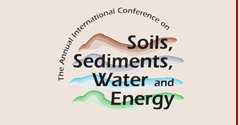Abstract
Perchlorate ions from rocket fuel, flare and munitions manufacture and use have escaped into groundwater in several states in the USA. Perchlorate causes alarm because it mimics iodine physiologically and is adsorbed by the thyroid gland, subsequently interfering with the endocrine systems of the brain. Removal of perchlorate to very low ppb is difficult on two fronts: competing ions such as nitrate, sulfate, carbonate etc. are often present at 1000 times higher concentration than perchlorate, and perchlorate is surprisingly stable considering its reputation as a rocket fuel oxidant. Direct electrochemical reduction of perchlorate in the parts per billion range is too slow and expensive to be viable. Ion exchange produces a troublesome disposal problem: either a perchlorate laden ion exchange resin or a brine stream containing high concentrations of perchlorate, nitrate, sulfate and bicarbonate. Electrochemical redox reduction of perchlorate, coupled to ion exchange capture and concentration is an economic and elegant method of dealing with both nitrate and perchlorate, particularly if the kinetics of the reduction process are fast. Perchlorate is surprisingly stable to reduction at a reducing cathode and with common reducing redox ions such as Cr2+, Fe2+. The reaction of perchlorate with Ti3+ is well documented in the literature, but the kinetics are slow in common solutions. In our latest study we have discovered that the reaction of perchlorate with titanium ions in methanesulfonic acid is very fast. We describe the laboratory experiments and pilot plant field trials in California that demonstrate the utility of this method for removing perchlorate and nitrate directly from drinking water and from regenerant brines from ion exchange systems.
Recommended Citation
Bae, Chulheung; Dougherty, Brian; and Harrison, Stephen
(2010)
"Removal Of Perchlorate From Drinking Water And Ion-Exchange Regenerant Brines,"
Proceedings of the Annual International Conference on Soils, Sediments, Water and Energy: Vol. 12, Article 16.
Available at:
https://scholarworks.umass.edu/soilsproceedings/vol12/iss1/16
